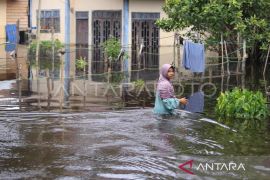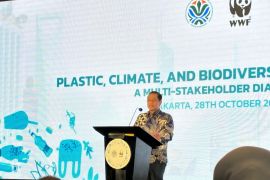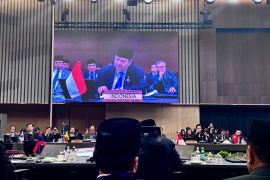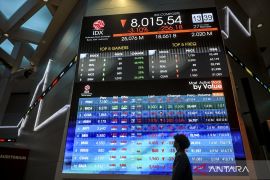Indonesia`s easternmost island of Papua comprising Papua and West Papua Provinces, have indeed been beset by shortage in power supply.Jakarta (ANTARA News) - Some 2.7 million families living in 12,569 villages across Indonesia reportedly still have no access to electricity in the current modern era.
Most of them living literally in the dark are villagers in Papua and particularly in border areas. In the district of Boven Digoel located in the border of Papua Province and Papua New Guinea, for instance, at least 26 kampongs have no electricity.
Indonesias easternmost island of Papua comprising Papua and West Papua Provinces, have indeed been beset by shortage in power supply.
Electricity projects have been long left idle and construction of some of them that had started since 2008, were delayed.
Now, under the Joko Widodo (Jokowi) administration, the government has gradually coped with the problem by building new power generating plants.
Because the operation of the power infrastructure projects in Papua and West Papua would not only reduce problem in power supply in the two provinces, but also help boost the regional economy.
Across the country, the government has planned to build new power plants with a total capacity of 35,000 megawatts by 2019.
Indonesias State Power Utility PT PLN has set a target of supplying electricity to all sub-district capitals in the outermost islands and border regions by 2019 and increasing the rural electricity operational hours to 24 hours a day.
As for Papua Island, President Jokowi has directed that the electricity infrastructure projects in Papua and West Papua be completed by 2019 to enhance the power availability in the eastern provinces.
"Right now, Papua generates 47 percent of the demand. I want it to reach 90 percent by 2019," the Head of State said while inaugurating six electricity infrastructure projects worth Rp989 billion, in Papua on Oct. 17, 2016.
The six electricity infrastructure projects officiated by the President were hydro-power plant (PLTA) Orya Genyem (20MW), mini hydro-power plants PLTMH) Prafi Manokwari (3MW), the Genyem-Waena-Jayapura 70 kV transmission line (174.6 km circuit), the Holtekam-Jayapura 70 kV transmission line (43.4 km), the Waena-Sentani 20 MVA substation and 20 MVA Jayapura substation.
President Director of PT PLN Sofyan Basir said the PLN is currently building Rp7 trillion worth of electricity infrastructure in Papua and West Papua.
"We are building new power generation plants with a total capacity of 253 MW in 13 locations in Papua and West Papua as well as a 246 km transmission circuit and eight substations worth Rp7 trillion," he added.
Basir added that as of now, Papua and West Papuas electricity system has a total 294 megawatt power capacity, with 242 megawatt peak load.
"The load has been growing on an average by 8 percent per year," he added.
He affirmed that the PLN is committed to increase the number of power plants using renewable energy resources as fuel.
"The renewable energy-based power plants in Papua and West Papua reflect the companys commitment to ensuring a more equivalent power distribution and using environment-friendly renewable energy as a source of power. The target is to enhance the usage of this form of energy to 23 percent by 2025," he noted.
Papua Governor Lukas Enembe appreciated the commissioning of the six power infrastructure projects by the president.
"The availability of electricity is very strategic with its impact on investment and the peoples economy in the region," the governor said.
In fact, President Jokowi has designated that the second year of his administration is the year for acceleration of development implementation. And this policy is also applied to West Papua and Papua.
He asked PT PLN, to complete electricity infrastructure projects in Papua faster.
"I do not want them to linger on till 2020. These should be completed by 2019," he said referring to the constructions of power plants in the two provinces.
He admitted that geographical conditions in Papua are challenging but stressed that these must not be used as an excuse to delay the projects.
"I know the situation is tough but that is a challenge that projects in Papua and West Papua always pose. I know this but the projects must not be delayed," he reiterated.
Papua has a hilly topography with little accessibility and that posed a special challenge for PLN during the construction.
Thanks to the hard work of PLN workers and assistance from all stakeholders as well as community members and local governments, the 70 kV SUTT from Orya Genyem to Waena and Jayapura as well as the 70 kV SUTT from Holtekam to Jayapura were duly completed.
PLN has set a target of supplying electricity to all sub-district capitals in the outermost islands and border regions by 2019 and increasing the rural electricity operational hours to 24 hours a day.
Moreover, not only are the electricity infrastructure projects being expedited on Papua Island, but also other projects such as those meant to develop connectivity between districts, such as road development, are also being pushed.(*)
Reporter: Fardah
Editor: Heru Purwanto
Copyright © ANTARA 2016











